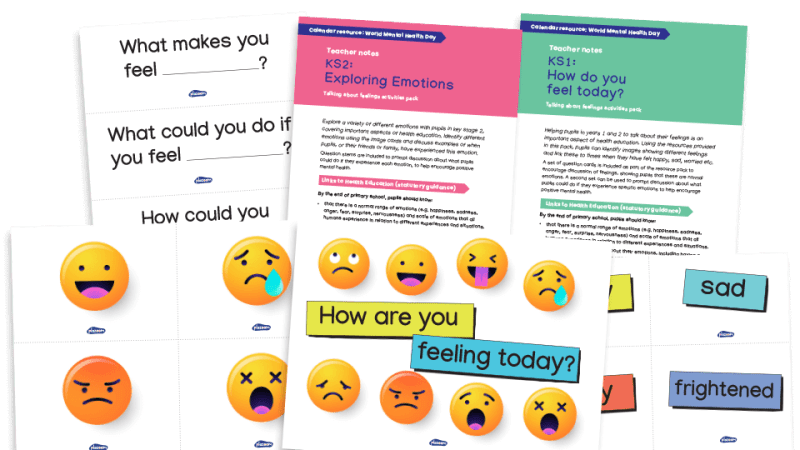How To Address Your School’s SLCN Skills Gap

Speech, Language and Communication Needs provision in schools is suffering from a deficit of knowledge and confidence – and as Nicola Holmes notes, it's up to teachers and leaders to start putting things right

As a speech and language therapist, my working life is both incredibly rewarding and incredibly challenging. One of the biggest challenges I face, on a near daily basis, is raising awareness of what I do and the importance of speech, language and communication skills, particularly for children.
As many SLTs will tell you, it’s not unusual to be having a conversation with a taxi driver or new acquaintance and hear a series of familiar responses when the conversation moves on to my day job – “Oh, I’d better make sure I speak PROPERLY then,” for example.
Either that, or the enquirer assumes the role is purely about helping children with lisps.
We’ll often just shrug this off as part and parcel of the day job, but it hints at a genuine and serious issue.
Consider that in some areas of the country up to 50% of children will start school without the speech, language and communication skills they need, and that nationally, around two children in every classroom will have a developmental language disorder (DLD).
It still surprises me that so many people still don’t understand what I do for a living.
Major mismatch
With so many children arriving at school with poor language, teachers have a key role to play in developing these skills – but are they sufficiently equipped to do so?
In 2016, The Communication Trust conducted a survey into the learning experiences of the school workforce around SLCN. The consultation received over 1,200 responses, and sought to explore both initial teacher training and the availability of CPD opportunities in subsequent teaching roles.
More than two thirds of teachers reported receiving little or no learning in speech, language and communication during their ITT, while half of the respondents had yet to receive CPD in this area in their current role.
Looking into what barriers might preventing teachers from access such CPD, several common themes emerged. Perhaps unsurprisingly, the most commonly cited barrier was lack of budget, closely followed by lack of time and staffing capacity.
Drilling down further, it soon became apparent that not only do some teachers lack learning around what constitutes typical development, but that there’s also a distinct lack of confidence when it comes to identifying and supporting children with SLCN.
Given how important speech, language and communication skills are for underpinning learning and the prevalence of SLCN, this is a cause for significant concern.
The identification of children with SLCN continues to be a huge issue across the country, with a major mismatch between the known prevalence and the numbers of children actually being identified and supported.
Training the workforce
The impact of failing to identify these children is well documented. Children with language difficulties are much less likely to do well and achieve expected levels in primary school, and are far more likely to have difficulties with learning to read.
They are furthermore less likely to achieve formal qualifications at the end of schooling and are at greater risk of developing social, emotional and mental health difficulties.
Early identification, interventions and timely referrals to specialist services can act as a protective measure against these longer term issues, minimising the impact of SLCN, maximising children’s outcomes and in some cases, resolving the difficulties altogether.
The importance of training the workforce can’t be underestimated. The SEN Code of Practice is clear that teachers are responsible and accountable for the progress and development of all the pupils in their class, so it makes sense that they should be well-equipped to identify and support those with SLCN.
The Communication Trust continues to advocate for the importance of embedding speech, language and communication into ITT, but in the meantime we’ve developed an online tool that can be used to analyse current skill levels across a school workforce – identifying where the learning gaps are, and signposting to development opportunities that can plug them.
It’s called the Speech, Language and Communication Framework (SLCF) and is free to use.
It includes searchable databases for formal development opportunities, as well as learning resources such as handbooks, information sheets and other materials designed to support teachers (and NQTs) on their CPD journey – some of which may have the potential to overcome the issues of cost and budgets highlighted in the aforementioned consultation.
Wider workforce training enables schools to meet their responsibilities under the 2014 SEND reforms, ensuring high quality classroom teaching for all pupils with SLCN.
Alongside this is effective commissioning across a three-tier model, starting at a universal level, maximising all children’s speech, language and communication development, supporting those who aren’t quite keeping up with their peers at a targeted level and then providing specialist intervention and expert help for those with more complex, long term needs.
A 5-point plan
The evidence of what works best to support children with SLCN is increasing. Here are five great things that schools can start doing right now.
1. Place SLCN at the heart of school planning Prioritising SLCN at a senior leadership level, and having a clear strategy in place, is for effecting change across the school. The Communication Commitment is a free, comprehensive resource produced by The Communication Trust that can support schools in transforming practice across their whole setting.
2. Empower staff Staff need to be able to understand, identify and support children and young people. There are a wealth of resources out there for supporting workforce development, ranging from free online courses to accredited Level 3 qualifications for those hoping to develop more specialist skills.
3. Be ‘communication friendly’ It’s widely recognised that environments can make a big difference to children’s communication.
See to it that everyone in the school understands what constitutes a communication friendly environment, and see how ‘communication friendly’ your school is by using the Communication Trust’s free Communication Friendly Checklists.
4. Involve young people Listening to young people, including those with SLCN, is crucial for making sure they get the support they need and want.
The Communication Trust’s Involving Children and Young People with SLCN toolkit is specifically designed for education staff such as teachers, TAs and SENCos, and aims to help shape approaches to involving children and young people as part of everyday good practice.
5. Do what works Schools want to be sure that they’re using interventions and approaches that are effective, that they know and understand the latest evidence around SLCN, and that they can find this information quickly and easily.
The What Works database is a free searchable tool that helps teachers find robust, evidence-informed interventions and approaches to supporting children and young people with SLCN.
What is DLD?
Developmental language disorder is a clinically significant language difficulty requiring specialist support and intervention
Did you know?…
DLD is seven times more prevalent than other childhood conditions such as autism and ADHD
Nicola Holmes is lead professional advisor at The Communication Trust.










